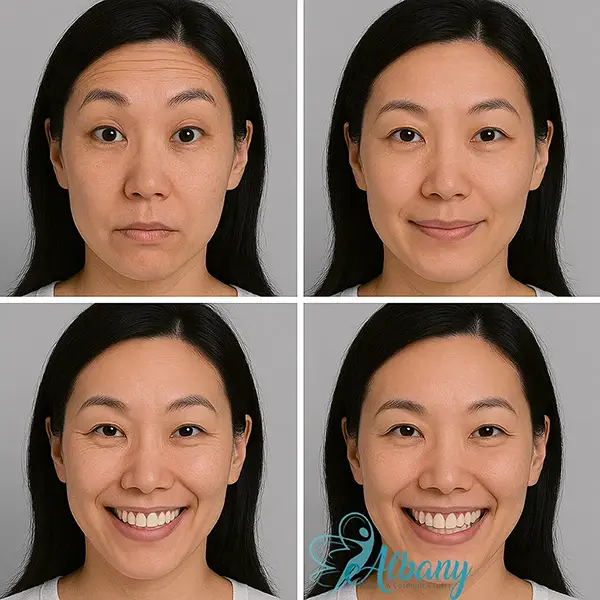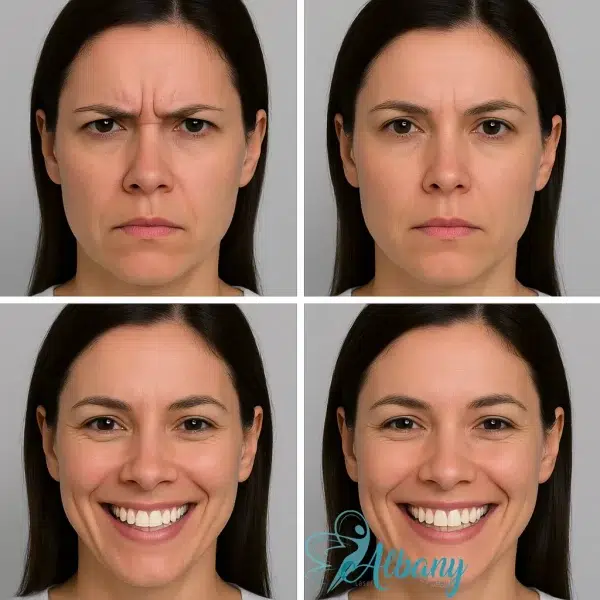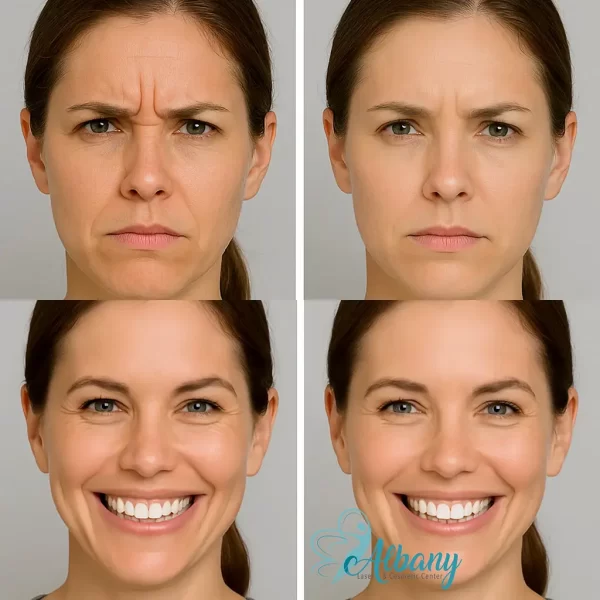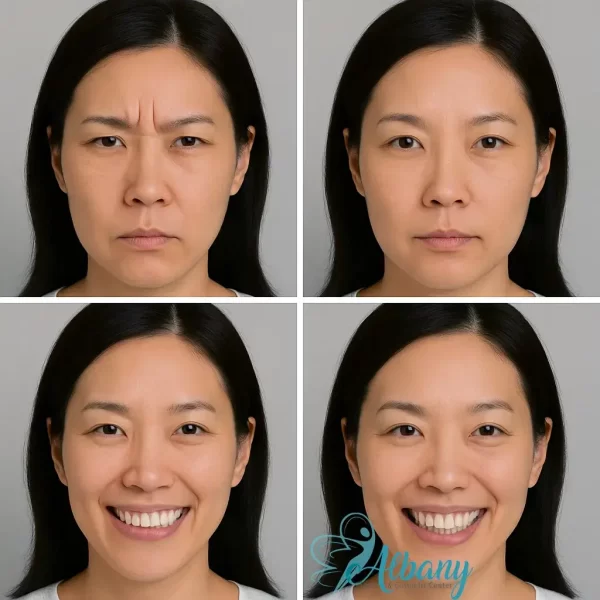Botox Preparation & Aftercare: Your Path to Smooth Results
Botox® injections are quick, minimally invasive treatments that soften lines and wrinkles by temporarily relaxing targeted muscles. To make the most of your appointment and protect your investment, you’ll want to plan ahead and take care of yourself afterward. This guide combines preparation tips and post‑care advice to minimise bruising and swelling, keep the toxin exactly where it’s needed and extend the life of your results.






Why Preparation & Aftercare Matter
Although Botox is a simple in‑office procedure, it involves injecting a medication into your muscles. Certain medications, supplements and lifestyle factors can increase the risk of bruising or affect how the product settles. After the injections, the way you sit, sleep and move can influence where the toxin travels and how long it lasts. Following these guidelines helps ensure a smooth treatment and optimal results.
Preparing for Your Botox Appointment
Two Weeks Before
- Schedule wisely: Book your appointment at least two weeks before major events. This allows time for any bruising to fade and for the full effect of Botox to develop.
- Pause blood thinners and certain supplements: Unless prescribed by your doctor, avoid medications like aspirin, ibuprofen, naproxen, Motrin and Aleve, as well as supplements such as fish oil, vitamin E, ginkgo biloba, St. John’s wort, flaxseed and ginseng. These can thin your blood and increase bruising.
- Avoid other procedures: Postpone dental work, vaccinations, tattoos, piercings or surgical procedures for at least two weeks before your Botox treatment to reduce the risk of infection and inflammation.
- Discuss medical history: Tell your injector about any medical conditions, allergies, medications or previous adverse reactions to injectables. If you have a history of cold sores, ask about antiviral medication to prevent an outbreak.
Two to Three Days Before
- Stop irritating skin products: Discontinue tretinoin (Retin‑A), retinol, glycolic acid, benzoyl peroxide and other exfoliating or “anti‑aging” products on the treatment area to avoid skin irritation.
- Skip hair removal: Avoid waxing, threading, plucking or using depilatory creams on the areas to be injected to prevent inflammation.
- Consider arnica or bromelain: If you’re prone to bruising, ask your provider about starting arnica tablets or bromelain supplements a few days before your appointment.
The Day Before & Day of Treatment
- Steer clear of alcohol, caffeine and smoking: Avoid alcoholic beverages, caffeinated drinks and tobacco for 24 hours before treatment. These substances dilate blood vessels and can lead to more bruising.
- Limit strenuous exercise: Skip high‑intensity workouts the day before and the day of your appointment. Elevated heart rate and blood pressure can worsen bruising.
- Stay hydrated: Drink plenty of water to keep your skin and body hydrated; good hydration supports healing.
- Protect your skin: Avoid excessive sun exposure, tanning beds, saunas and steam rooms. Sunburned or overheated skin can be more sensitive to injections.
- Arrive makeup‑free: On the day of your appointment, cleanse your face thoroughly and do not apply makeup, moisturizer or sunscreen. Your provider will clean the skin again prior to injections.
- Eat a light meal: Have a snack or light meal before your appointment to avoid feeling faint.
- Wear comfortable clothing: Choose an outfit that doesn’t need to be pulled over your head to minimise contact with your face afterwards.
Who Should Delay or Avoid Botox
Botox is safe for most healthy adults, but you should postpone or avoid treatment if any of the following apply:
- You are pregnant or breastfeeding.
- You have an active infection, rash or cold sore in the area to be treated.
- You have had recent dental work, surgery or vaccinations within the past two weeks.
- You take immunosuppressive medications or have certain neuromuscular disorders; consult your physician for clearance.
- You have a known allergy to botulinum toxin or any component of the injection.
Botox Aftercare
How you care for yourself after your injections can influence where the Botox diffuses and how long it lasts. Follow these recommendations to support a comfortable recovery and beautiful results.
Immediately After (First 4–6 Hours)
- Stay upright: Remain seated or standing for at least four hours after your treatment. Avoid lying down or bending forward for prolonged periods, which can cause Botox to migrate.
- Hands off: Do not rub, massage or apply pressure to the injection sites. Gentle cleansing is fine once any puncture marks have closed.
- Facial expressions: Light facial exercises such as frowning, raising your eyebrows or smiling can help the product settle into the targeted muscles. Follow your provider’s instructions regarding facial movements.
- No makeup: Wait until the tiny punctures have closed—typically a few hours—before applying cosmetics. Ideally, avoid makeup for the rest of the day to reduce the risk of infection.
First 24 Hours
- Avoid vigorous activity: Skip strenuous exercise, yoga and heavy lifting. Elevated blood flow can cause Botox to move to unintended areas.
- No heat: Avoid saunas, hot tubs, steam rooms, tanning beds and exposure to intense sunlight. Heat dilates blood vessels and may increase swelling or bruising.
- Skip alcohol and blood thinners: Continue avoiding alcohol and, unless prescribed, non‑steroidal anti‑inflammatory drugs (NSAIDs) like aspirin and ibuprofen. These thin the blood and can worsen bruising.
- Delay facial treatments: Postpone facials, massages, chemical peels, microdermabrasion and other skin treatments for at least 24–48 hours. Lying face‑down or applying pressure can displace the toxin.
- Cool compresses: If bruising or swelling occurs, gently apply a cold compress wrapped in a soft cloth for 10–15 minutes at a time. Avoid direct pressure on injection sites.
- Sleep on your back: Use pillows to prop yourself up and avoid sleeping on your face. Pressure on the treated area too soon can affect your results.
First Few Days
- Expect gradual results: Initial improvements may appear within three to four days, with full effects visible by two weeks. Be patient and avoid seeking additional treatment until after this period.
- Mild side effects: Temporary bruising, swelling, tenderness or headaches are common and should resolve within a few days. You may take acetaminophen (Tylenol) for discomfort, but avoid NSAIDs unless directed by your doctor.
- Stay hydrated and nourish your skin: Drink plenty of water and use a gentle moisturiser to support healing and keep your skin supple.
- Resume gentle skincare: Once the injection sites have healed, you can return to your usual skincare routine. Wait at least two days before reintroducing retinoids or exfoliating products.
- Follow‑up appointment: If you have concerns or would like an adjustment, schedule a follow‑up with your provider 10–14 days after treatment. They can assess your results and make any necessary tweaks.
When to Contact Your Provider
Serious complications from Botox are rare, but you should call your provider immediately if you experience any of the following:
- Difficulty swallowing, breathing or speaking.
- Vision changes or drooping eyelids not associated with the injection site.
- Severe pain, redness, pus or signs of infection at the injection sites.
- Generalised weakness or flu‑like symptoms.
Longevity & Maintenance
Botox results typically last three to four months, though this varies by individual. Maintaining a healthy lifestyle, protecting your skin from sun damage and avoiding smoking can prolong your results. Plan to schedule maintenance treatments a few times a year for continuous rejuvenation.
Request Your Appointment Today
Read our privacy policy here